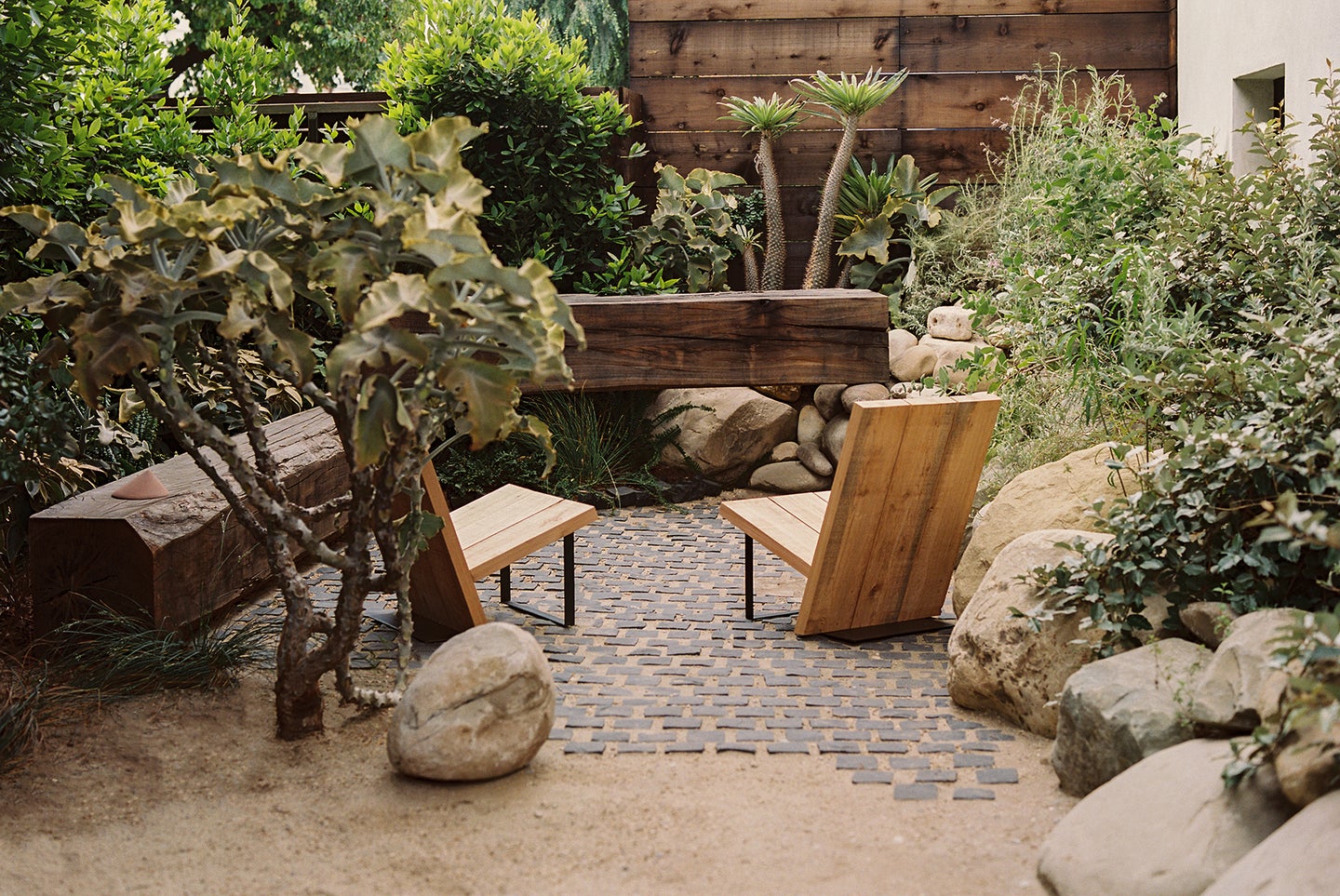The Patio Construction Material This Landscape Designer Won’t Ever Work With
Make your hardscaping as organic and flowy as the plants.
Published Aug 10, 2023 1:45 AM
We may earn revenue from the products available on this page and participate in affiliate programs.
One of the most common requests Molly Sedlacek, founder of landscape design and outdoor product studio ORCA, gets from clients is to rip out the concrete in their yard. Patios, walkways, steps—you name it, they want it gone. “I kept thinking, if everyone needs to remove it, why are we still specifying it?” says Sedlacek. Other than not being all that pleasing to look at, concrete doesn’t allow water to move through it (instead, it must be drained or sloped to a run-off point changing its distribution) or micro-organisms to breathe underneath it. As the earth shifts over time, it cracks and results in pooling, flooding, and bare and rotted roots. Sedlacek’s strong feelings against concrete is part of the reason she’s focused her company on permeable landscaping, or, in other words, setting hardscaping materials in a layer of sand and elevated joints that allow water to flow freely underneath and around them.
What better place to showcase her ideas than her own Los Angeles home, which Sedlacek bought a little over a year ago when there was barely a garden to speak of? “The day I got the keys, I started excavating,” she recalls. Step one was to level out the lower yard, which stretches 30 feet long and around 25 feet wide. There’s also a smaller upper patio level that Sedlacek sought to turn into usable space. Ahead, she takes us through her outdoor oasis and shares all the ways hardscaping can appear just as organic as plants.
Secure Your Slice of Paradise
Because her house sits at the bottom of a hill, it’s essentially a basin for all the water runoff in the neighborhood. Sedlacek knew she’d need a sturdy retaining wall along the exterior, so in lieu of using concrete, she patched together large boulders sourced from nearby Santa Paula. The permeable stone allows all the water to pass through it rather than gather in her yard.
When it came to ensuring privacy from the busy street, she first installed a steel fence (its slim profile promised not to soak up any valuable square footage). But to make the metal barrier a touch more stylish, she lined it with wide-plank rough-sawn redwood that’s stained with a fungus-based treatment that is chemical-free.
Play With Local Clay
Saltillo tile used to line the upper patio, but the material screamed builder-grade, so Sedlacek replaced it with clay pavers made in Sacramento. When choosing materials, she likes to shop locally to limit the freight distance (particularly with bricks, given they are incredibly heavy). “Keeping the manufacturing in California is important to us,” she notes. She also worked glass blocks into the mix, allowing natural light to pass through into her office/studio space below.
Layer in Cobblestone
ORCA stands for Oregon, California—the location is where Sedlacek’s parents live and work as landscape designers themselves. On a recent trip to their nursery, she scooped up some old cobblestone pavers. “I wanted a piece of Oregon in my garden,” she says. Usually, Sedlacek chooses a gravel that matches the tone of the pavers, but in smaller spaces like her own she goes for a contrasting hue. Here, she used a tan decomposed gravel that pops against the stone and the bay laurel around the perimeter. “The lighter material makes the space look bigger,” she explains.
Mimic Mother Nature
In addition to custom chairs designed by ORCA, the space’s seating consists of thick pieces of coastal live oak courtesy of Angel City Lumber, a company that upcycles fallen trees in the L.A. area. The beams had to be craned onto Sedlacek’s patio and laid just so to make it appear as though they had fallen on top of the rocks like logs in a forest, but the extra effort was worth it. “We really like to do elements of permanence, just because there’s so many parts of a garden that are very impermanent, like changing plants,” she explains. Even Sedlacek’s dogs are a fan of the arrangement. “They treat it like a balance beam,” she says with a laugh.
While it didn’t apply to her own garden, carving out swales and water catchments is an important part of ORCA’s projects. The company tends to add swales (or long trenches) to spaces where the home’s foundation sits lower than the natural grade of the land, which, if nothing is done about it, inevitably results in poor drainage. “It’s a really nice design feature, plus we’re essentially celebrating the natural ones that appear in the landscape,” says Sedlacek. She also swears by drip irrigation. “It’s the most efficient way to get plants established,“ she adds. The system, which delivers H2O slowly to the roots, usually from above the soil surface, uses less water than a hose, and the plants have a better chance of survival.






